Amazing UNESCO World Heritage Sites in Europe – part 2
There are many amazing heritage sites in Europe and it is with joy that I’m presenting you in this article 15 more top UNESCO World Heritage Sites in Europe recommended by travel bloggers. Make sure you:
- discover the first 15 UNESCO World Heritage Sites in Europe from the previous article in the series;
- Must-See UNESCO World Heritage Sites in Europe – part 3 (20 sites)
- The best UNESCO World Heritage Sites in Europe to add to your bucket list (part 4) (20 sites)
- The Best UNESCO World Heritage Sites in Europe – part 5 (24 sites)
The castles of the Loire Valley, France
by Wendy from WorldWideWendy; instagram
France is one of my favourite countries to visit. It has everything. Amazing cities like Paris, mountains for skiing and a beautiful coastline with trendy places like St. Tropez. Not to mention the amazing food and superb wines.
But no region has ever charmed me like the Loire Valley. I am a sucker for history and the Loire region breathes history. The valley around the Loire River was a popular hunting area in the 15th century. Of course the royalty needed castles to spend their holidays over here. Many of these castles stood the test of time and are well preserved, therefore, the region between Sully-sur-Loire and Chalonnes-sur-Loire has been declared Unesco World Heritage.
In the Loire Valley there are about 140 castles. To help you out, I will share my favourite castles with you.
Cheverny
This castle is perfectly symmetrical and was build in the beginning of the 17th century. The current owners are descendants of the first owner. Tintin fans have to visit it as it stood model for Castle Molensloot in the Tintin stories.
Anecdote: During WW II the Mona Lise was hidden in the Orangerie of Cheverny
Chambord
Chambord is, with 440 rooms, the biggest castle in the Loire Valley. Nevertheless it was almost never occupied. It’s probably built on the basis of sketches of Leonardo da Vinci.

Chaumont-sur-Loire
This castle in Loir-et-Cher was built in the 10th century and was destroyed twice. Catharine de
Medici bought it to get rid of the mistress of her husband.
Amboise
The Amboise castle was built in the 11th century as a lookout point over the Loire.
Chenonceau
This is my favourite castle. It’s built on pillars in the water and the reflection in the water is beautiful. It is clear that the women ruled over here. The gardens are beautiful too.
Chateau d’Usse
This castle was a model for Sleeping Beauty.
Villandry
Villandry is a very well preserved castle and is very beautiful on the inside. Try to attend a classical concert over here.
As the Loire Valley is not that big, you can easily stay in one or 2 different places to explore the area. There are many small hotels that will guarantee a great holiday. Spring and fall are the best time to visit. It’s not that busy and temperatures are nice.
Amalfi Coast, Italy
by Flo from Yoga Wine Travel; instagram
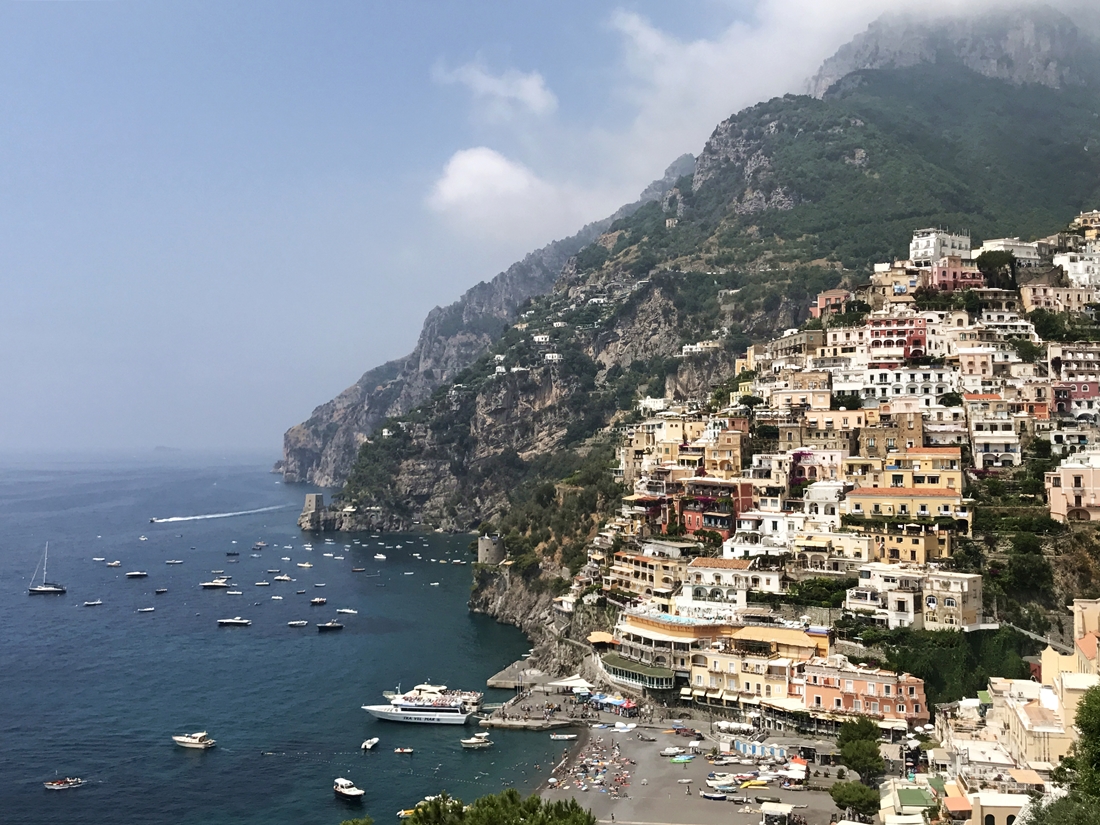
The Amalfi Coast is a 50 KM stretch of coastline along the southern edge of Italy’s Sorrentine Peninsula and is a UNESCO-listed landscape. It is lined with stunning towns running from Positano all the way along to Vietri sul Mare. You’ve probably heard all the hype about it and guess what? It’s all true!
Spend your days walking through narrow cobblestone streets, eating delicious Italian food, taking one thousand photos, lounging on beaches or sipping on limoncello. Though it is a very popular tourist destination in Italy, it’s not hard to get off the beaten track if you venture beyond Positano to some of the smaller coastal towns (don’t skip Conca dei Marini) or visit outside of the peak season from June to September.
Unlike Rome, Florence and Venice, the Amalfi Coast is not easily reached by train so brace yourself for a few different modes of transportation. You’ll have to get there via Naples, Sorrento or Salerno and then take either a ferry, shuttle bus or private car. The best way to get around the Amalfi Coast is by scooter as the traffic can be unbearable, and parking is extremely limited. Alternatively, you can also do day trips to the Amalfi Coast from Sorrento, which is much less crowded than Positano or Amalfi. If you don’t feel like splurging on accommodation in the Amalfi Coast, Sorrento is a great place to base yourself to explore the surrounding region and islands!
Royal Alcazar of Seville, Spain
by Dhara from It’s Not About the Miles; instagram
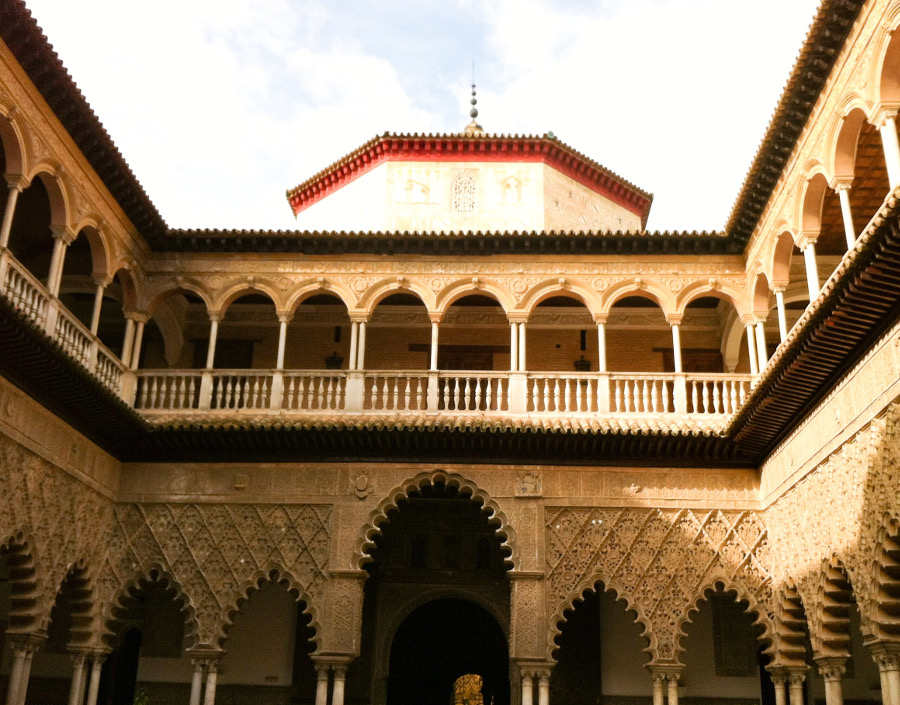
Designated a UNESCO World Heritage Site in 1987, the Royal Alcazar of Seville is a must-visit sight for any visitor to Seville. The Alcazar of Seville is considered a marvelous example of the Mudéjar architectural style, a mix of Moorish and Christian styles, or a style adding Islamic art and architecture to medieval Christian architecture. The palace-fortress complex still functions as a residence for the royal family when they visit Seville.
Situated in the heart of the historic center of Seville, the Alcazar was built on the site of a Visigothic church. While every part of the Alcazar is beautiful, you definitely must visit the stunning Courtyard of the Maidens, where lacy arches surround a reflecting pool. The architecture is simply gorgeous.
Also a must-not miss is the ornate Salon de Embajadores, with its rich details. Across the courtyard, visit the Salon de los Tapices, the Hall of the Tapestries. Some of the tapestries are enormous, depicting complex scenes in beautiful colors. I loved the saffron yellow walls of this area of the Alcazar. Also in the Alcazar you will find beautiful examples of azulejos, decorative tiles that you find in many great monuments in Andalusia.
After you view the beautiful interiors, be prepared to be charmed by the gorgeous gardens. The orangerie contains numerous mature orange trees. Traditional ponds, fountains and other water features are dotted throughout the gardens, which also feature architectural elements in lovely colors. Beds of colorful flowers are hemmed in with formal hedges, and sculptures complete the picture. In the spring, the fragrance of jasmine and citrus blossom is overwhelming.
The Alcazar is truly one of the great monuments of Andalusia, well worth adding to your Spain itinerary.
The historic center of Florence, Italy
by Kate from Our Escape Clause; instagram

Bustling and beautiful, the historic center of Florence is one of our favorite UNESCO World Heritage Sites of all time!
Nicknamed the Cradle of the Renaissance, this is a city where you can marvel at the 3rd largest cathedral dome in the world, buy leather goods from outdoor markets, sample some of the best food on the planet, and casually wander through 800-year-old palaces and churches.
While you’re visiting the historic center of Florence, be sure to stop by the Duomo (and climb either the bell tower or the famous cupola for epic views over the city), admire the artistic masterpieces in the Uffizi Gallery, stroll across the picturesque Ponte Vecchio bridge, browse the markets for souvenirs, and, of course, eat lots and lots of Tuscan food.
Florence is lovely to visit at any time of year, but we are partial to visiting in either the spring (when the gardens around the city, including the Boboli Gardens and the Rose Garden, will be blooming and at their best) or the fall (when the olive oil is being harvested and the fall foliage is stunning).
Summer will bring the biggest crowds and winter will bring gray skies and cold weather, but regardless of when you have the opportunity to visit Florence, it’s worth taking the time to do so.
Historical Monuments of Mtskheta, Georgia
by Emily Lush from Wander-Lush; Facebook
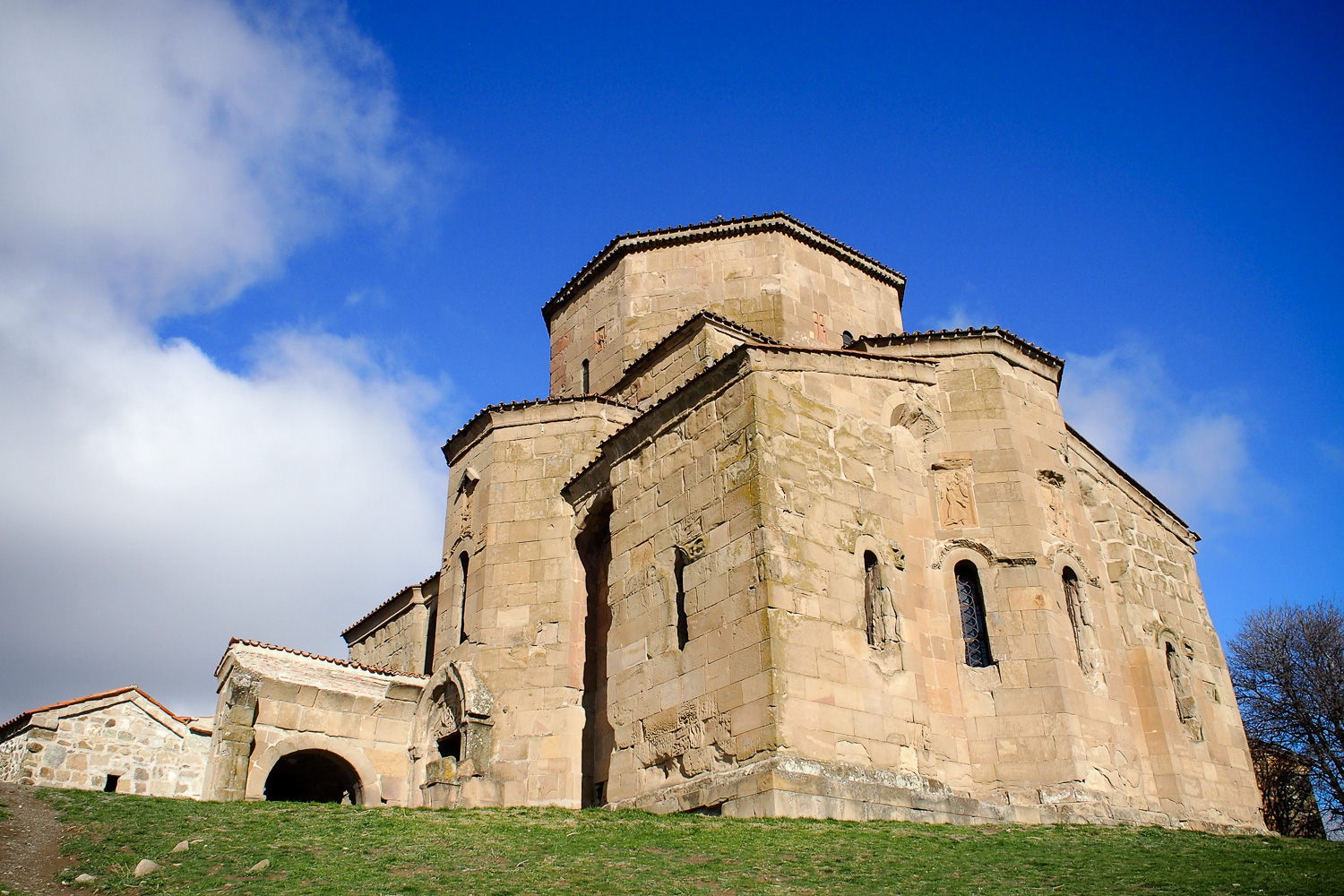
Founded in the 5th century BC, Mtskheta is one of the oldest cities in Georgia. The former capital played a pivotal role in the spread of Christianity throughout the Caucasus region (and into Europe), and remains the seat of the Georgian Orthodox and Apostolic Church.
After neighbouring Armenia, Georgia was the second nation on earth to adopt Christianity as its state religion. An estimated 84 percent of the population are Christian, and according to a 2018 study by Pew Research Center, Georgia is one of only two countries where young people are more pious than their elders.
Visiting Mtskheta is crucial to understanding the importance of religion in modern-day Georgia. The Mtskheta Historical Monuments was recognised as a UNESCO World Heritage Site in 1994. It consists of three separate structures: Svetitstkhoveli Cathedral, Samtavro Monastery, and the iconic Jvari Monastery, which is set on a hill high above the town. Mtskheta’s location at the confluence of the Aragvi and Mtkvari Rivers is gorgeous, and the views from Jvari spectacular. All three sites showcase outstanding examples of medieval architecture. The iconographic frescoes inside Svetitstkhoveli are particularly impressive. The Mtskheta Historical Monuments are still active houses of worship—I highly recommend visiting on a Sunday so you can observe the various rituals (respectfully, of course).
Mtskheta’s close proximity to Tbilisi – Georgia’s current capital – makes it an easy and affordable day trip. To get there, take a marshrutka (fixed-route minivan) from Didube Station. The trip is roughly 20km and takes under an hour. To get to Jvari, pick up a 4WD and driver from Mtskheta town square. Or if you’re so inclined, you can hike up to the church from the town. As with other cathedrals and monasteries in Georgia, women are requested to dress conservatively. Wrap-around skirts and head scarves are available to borrow for free at all three sites.
Krakow’s Old Town, Poland
by Kris from Nomad by Trade; Facebook
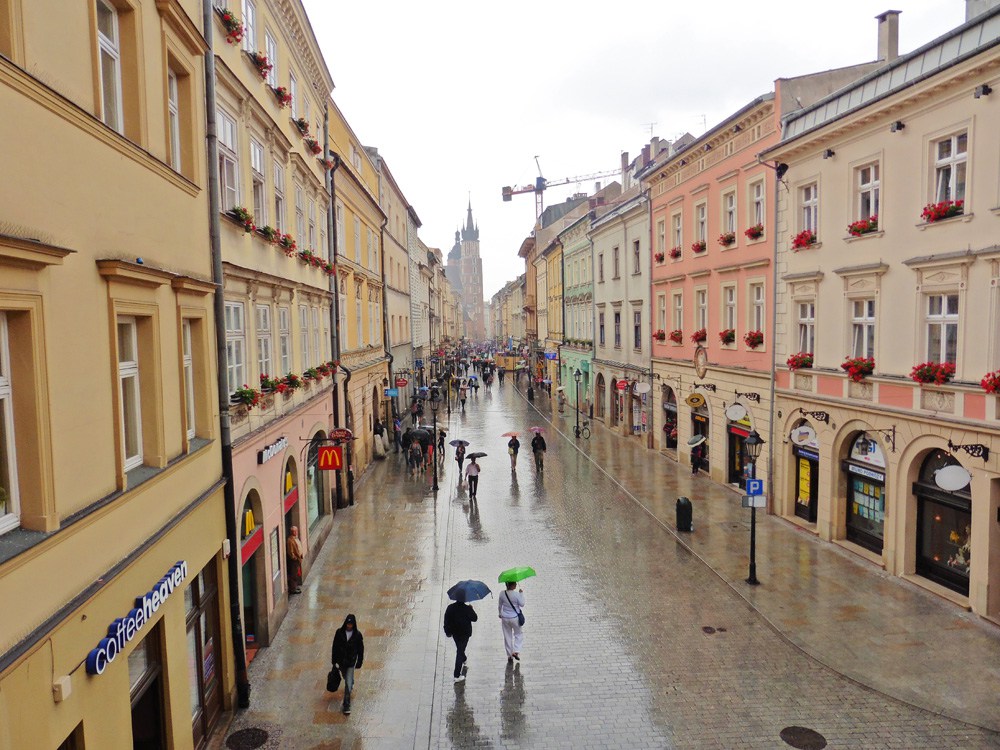
Krakow’s Old Town area was the first Polish location added to the UNESCO lilst. Centered around the Rynek Glowny, the largest market square in Europe, it’s my favorite historic area in any city I’ve visited. Unlike a lot of old town areas like Warsaw and Munich, Krakow wasn’t destroyed during WWII, so its historic buildings are actually as old as they look. With their pastel colors and beautifully decorated exteriors, you’ll feel like you’ve stepped into a fairytale. The Cloth Hall at the center of the square has been the site of markets for centuries and still boasts rows of stalls, though these days you’ll find more touristy trinkets than handmade goods. The Rynek Glowny is also the site of lively street entertainment with acrobats, musicians, and other performers frequently appearing. The square is lined with stores and restaurants, some of which are centuries old. You’ll also find the ornately decorated St. Mary’s Basilica in one corner. Its strikingly decorated blue ceilings are very different compared to other churches I’ve toured in Europe.
Head up Wawel Hill to tour the former royal palace where Polish kings ruled for centuries. Visitors can tour different exhibitions within the castle complex, but my favorite spot is the state rooms. Don’t miss a chance to explore Kazimierz, the former Jewish District at the foot of Wawel Hill, with its historic buildings and synagogues.
Mont Saint-Michel, France
by Hannah from HH Lifestyle Travel; Twitter
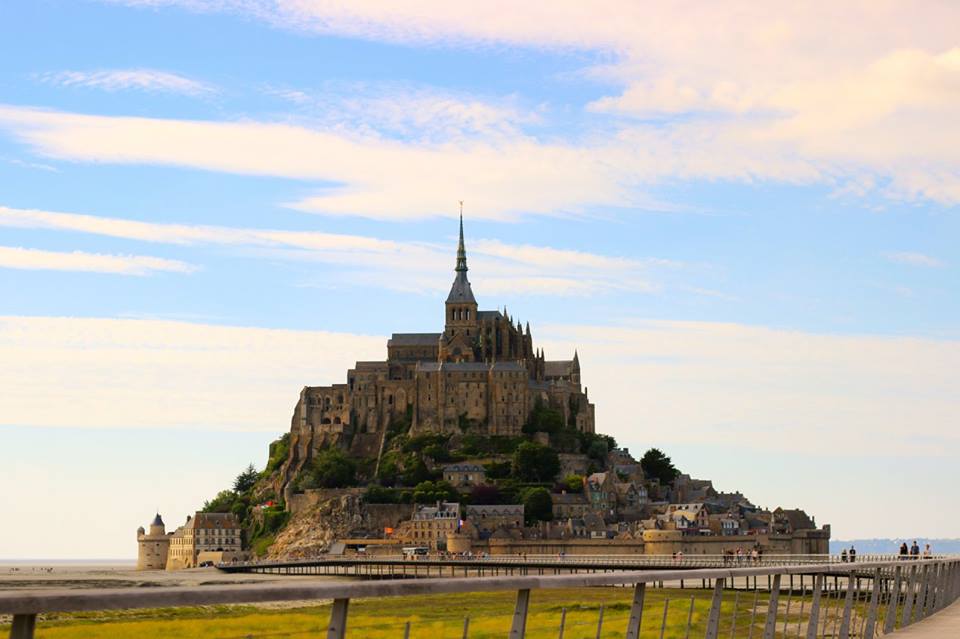
Mont Saint-Michel is one of the most striking UNESCO heritage sites in France. This tidal island on the Normandy coast is connected to the mainland by a bridge and is home to a beautiful Romanesque abbey. The island has been fortified for battle for many centuries due to its position on the coast; and has been home to an abbey since the 8th Century. Mont Saint-Michel has been an UNESCO World Heritage site since 1979, and over 3-million people visit this iconic landmark every year.
Getting there: You can get a train (with one connection), or a train / bus combination from Paris – both take around 3-3.5 hours. If you choose to drive, there are large, well sign-posted carparks on the mainland (for a fee); and a free shuttle bus that runs over to the island. You can also take a romantic horse-drawn Maringote carriage (that can carry up to 24 people) – mimicking the horse-drawn journeys the pilgrims used to take to the monastery.
Once on the island, there are many places to wander and explore. Climbing up to the abbey is a must – all the information you need can be gathered from the information kiosk near the gates. You can also walk along the sea wall, used to defend the island from invaders over the centuries. There are many shops, restaurants and refreshment options on Mont Saint-Michel – from quick bites to full a la carte restaurants overlooking the bay.
The tide can come in very quickly, so you are advised to keep off the mud flats that surround the island unless you have a guide. You can take guided tours of Mont Saint-Michel that include a trip out onto the mud flats as well as historical information about this fascinating and very photogenic UNESCO heritage site.
Sagrada Familia, Barcelona, Spain
by Justine Ancheta from Latitude 41; instagram
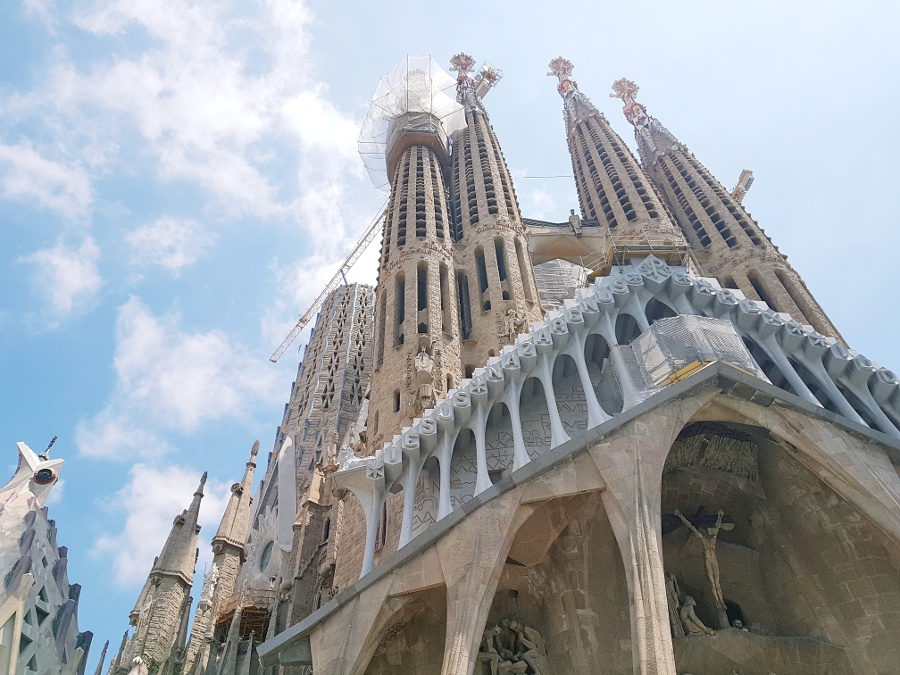
Sagrada Familia is the most iconic monument of Barcelona and one of the top visited sites in Spain. This Roman Catholic basilica has been on the UNESCO World Heritage list since 2005. Unbelievably, it’s been under construction for over 130 years and its expected completion date is in 2026. Its construction depends solely on donations, which is why progression is slow. Even its architect Antoni Gaudí has said, “It is a work that is in the hands of God and the will of the people”, and those public donations reflect that.
The sheer size of the Sagrada Familia make it an astonishing sight. It juts out of the Barcelona skyline, making it one of the tallest religious buildings in the world. What makes it even more magnificent is its unique and symbolic architecture. This modernist masterpiece has three radically different, sculpted facades representing the life and works of Jesus: the ornate Nativity façade, the angular Passion façade, and the still-to-be completed Glory facade. Its aesthetic details can be found in the berry-topped spires, angled columns, or towers that make a pyramidal shape pointing to the heavens.
The interior is equally impressive. Look up, and you’ll notice seemingly interminable arched ceilings with pillars likened to tree trunks. The numerous red, gold, and green stained-glass windows both illuminate the nave with outside light and saturate the interior with color. For sweeping views of Barcelona, take the elevator up to the towers. La Sagrada Familia is open all year, but the best time to visit to beat the crowds is when it opens in the morning and the last hours before closing. Buy tickets in advance to avoid long lines.
Potsdam, Germany
by Lesley Connor from Empty Nesters Travel Insights; Facebook
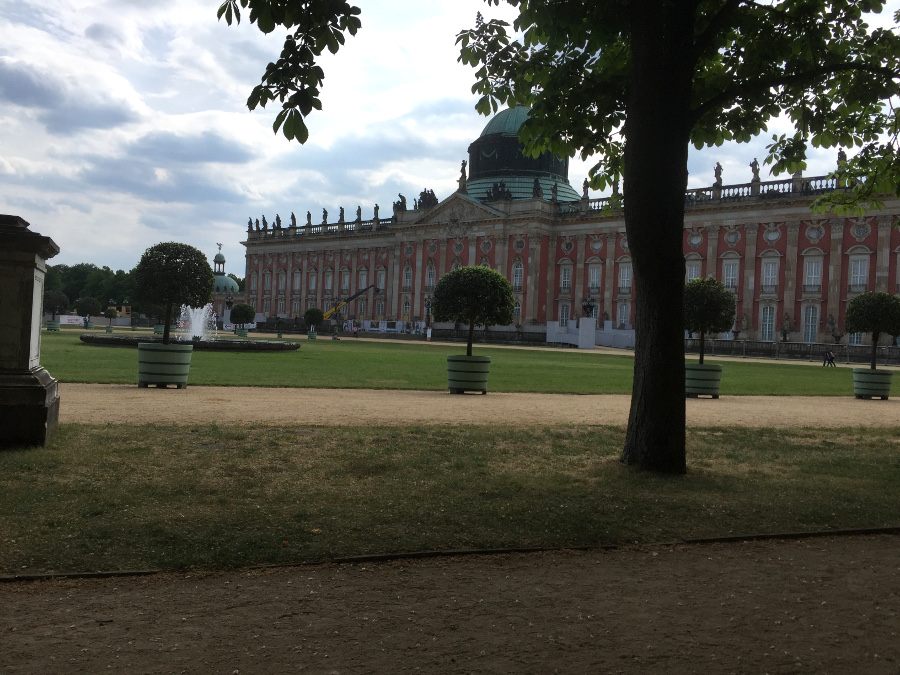
Few UNESCO world heritage sites have featured prominently in world history as frequently as Potsdam.
The medieval market town became the seat of the most powerful court in Europe, hosted post WWII peace negotiations at Cecilienhof Palace and its horticultural experiments brought the humble potato to Germany.
Potsdam offers not just one site, but an ecclectic collection of historic architecture, palaces and gardens.
Like many German towns, Potsdam suffered heavy WWII bombing. Many historic buildings have been sympathetically restored, though many original features still remain.
Within the Old town you will find St Nicholas’s Church in the “Alt Markt”, and the surrounding Old Market Square, once the centre of Potsdam.
Nearby you will find the old carriage houses of the City Palace constructed in 1666 under Elector Frederick William.
The old Dutch Quarter was originally built as accommodation to attract skilled tradesmen to the town. Known as “little Amsterdam” it features four squares and over a hundred two storey homes, made exclusively with red dutch bricks and white trimmings.
The highlight of a visit to Potsdam, Sans Souci Park, gives you a glimpse into the pomp and splendour of the Prussian Kings.
Set over 50 hectares of parkland, Sans Souci Park houses 17 palaces dating from 1730 to 1916, as well as artificial “Roman Ruins”, classical statues, baroque gardens and elaborate water displays within extensive formal gardens.
Frederick the Great designed the terraced gardens in 1744 to cultivate plums and figs, pursuing his passion for horticulture.
His grave lies within view of the Palace he built in 1745 and to this day locals lay potatoes on his grave to honour his horticultural endeavours which brought this staple food to Germany.
Situated in a serene lakeside setting within the gardens, the Church of Peace is based upon a drawing of the medieval Church of St Clementine in Rome. It features courtyard sculptures, frescoed domes and a 13th century Venetian mosaic above the apse.
The two most famous palaces within the park are the “New Palace” and “Sans Souci Palace”.
Meaning “without a care”, Fredrick the Great designed “Sans Souci” as an escape from the pressures of public life. Inside you will find the oppulence and splendour which was the hallmark of the Prussian Court. Gilt furnishings, glittering chandeliers and ornate frescoes feature throughout the rooms.
Frederick constructed the imposing “New Palace” in 1763 to commemorate the end of the Seven Year’s War. However he found the expansive marbled halls and gilt finishings “too ostentatious” for a private residence, preferring the “cosiness” of Sans Souci.
The New Palace was used for state occasions only for over a century, becoming the personal home to the German Emperors from 1873 to 1918.
A small number of rooms are open to the public, including state rooms and art galleries. The grand interior includes fossil mosaics, Italian marble floors, ceiling frescoes and gold embellishments.
Entry to the gardens is free, however admission to the palaces is by timed ticket only, with limited English speaking tours. It is possible to pre-order tickets to multiple palaces within the park.
Potsdam is an easy half hour train ride from the centre of Berlin.
Kotor, Montenegro
by Bertaut & Alexis from World Travel Adventurers; instagram
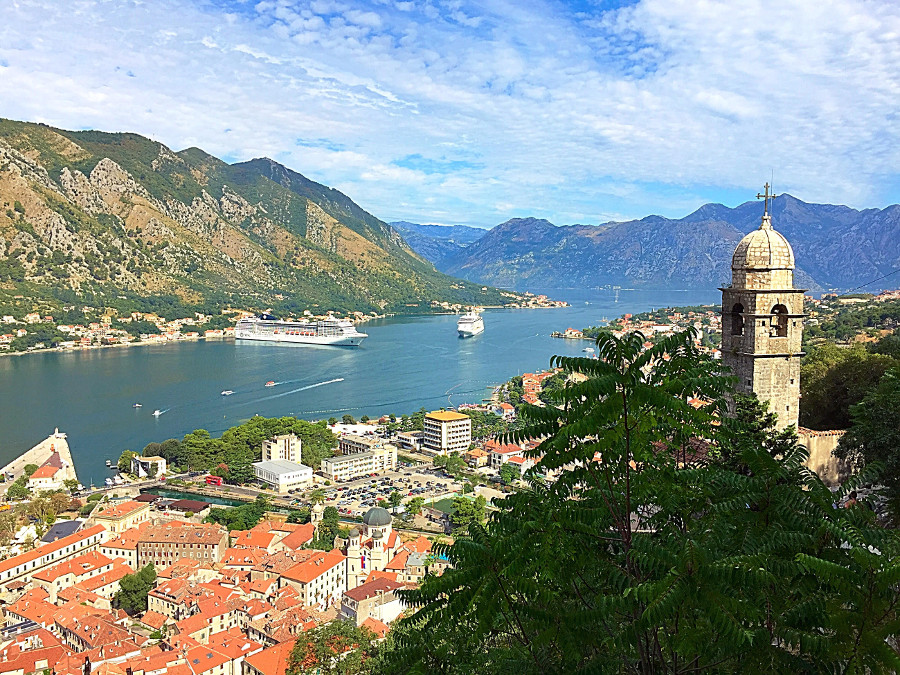
Kotor, Montenegro is a must-visit UNESCO site and one of the best-preserved medieval towns in the region. It’s believed that the coastal city has been around since 10-12 BCE, making it as ancient as sea trade on the Adriatic Sea. The World Heritage site encompasses the old town, its fortifications, and the surrounding region of the inner Bay of Kotor. This stunning area is one of the most beautiful places we’ve ever visited, especially when viewed from the path up St. John’s Hill with a jaw-dropping view of the bay. The steps up the hill are worth the effort for the epic photos you will capture up there.
The fortifications of Kotor protect it from the sea with a massive wall that’s 20 M high and 15 M wide at some points. Once inside its gates, one of which dates back to the 9th century, have fun exploring. We loved wandering around the narrow cobblestone streets of old town, where musicians played live music in front of ancient cathedrals and medieval architecture. Old Kotor was built like a maze for protective purposes, so don’t feel bad if you get lost. That’s part of the fun of discovering Old Kotor. Make sure not to miss the 12th century Cathedral of St. Tryphon’s, with many frescoes and a treasury of jewels.
The most popular time to visit Kotor is June, July, and August. Spring and fall are less crowded and cheaper times to visit. We drove to Kotor after renting a car from the airport at Podgorica and highly recommend driving for a beautiful scenic drive. It’s also possible to fly into Dubrovnik and rent a car, take a taxi or bus. Montenegro’s train network will take you as far as Bar, from where you can take a bus to Kotor. Many cruise ships also dock at the port of Kotor, creating an influx of tourists during daytime hours. Make sure to bring your camera because you will want to snap hundreds of photos of the picturesque old town and bay.
The Old City of Luxembourg
by Julianna from The Discoveries Of; Facebook

The Old City of Luxembourg is one of my favourite UNESCO sites in Europe. In all honesty, I didn’t know much about Luxembourg City before I spent three days in Luxembourg a few months ago. That was long enough for me to completely fall in love with the charming old city.
Luxembourg has always played an important role in European borders – in the past it acted as a buffer between the Kingdom of France and the Holy Roman empire. It was fortified over a number of centuries by the various powers that controlled it.
While that all came to an end in 1867, when most of the fortifications were destroyed, the remnants of those fortresses still stand today.
Where else can you disappear into a series of caves, dark and labyrinthine, winding their way down from the upper to lower parts of town? The Bock Casemates have a varied past, including being used as bunkers during WWII.
The Chemin de Corniche offers one of the best panoramic city views in Europe. Overlooking the lower parts of the Old City and the Alzette Valley – it’s a memorable sight.
I’d recommend spending at least a day in the Old City – it’s one of the most beautiful cities in Europe and you can visit at any time of year. Don’t miss it!
The walls of Dubrovnik, Croatia
by Shweta from Zest in a Tote; instagram
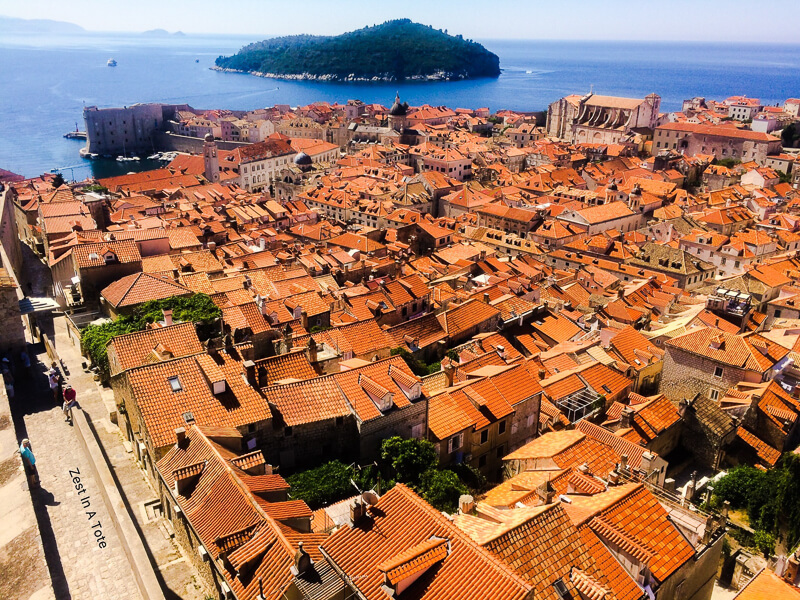
Dubrovnik is one of the prettiest old towns that I had visited in Europe. And one of the best way to experience the old town, whether you are a Game of Thrones fan or not, is to walk the walls. It is a jewel on the South Dalmatian coast in Croatia.
A bit about the walls first. The Walls of Dubrovnik are a series of defensive stone walls surrounding the old town. These walls were mainly constructed during 14th and 15th centuries but numerous fortifications were added later as well. They have never been breached and are an impressive sight in the old town. Here is a Photo Essay on various points of interest of Dubrovnik, a UNESCO Heritage site.
Walking the walls offers fabulous views of the old town with its bright orange-roofed houses and of the Adriatic Sea shining bright blue. The walls are quite wide on the top so you dont need hiking gear, just comfortable clothes and footwear. You see some of the interesting landmarks in and around Dubrovnik old town such as St. Lawrence Fortress, Lokrum island and Revelin fortress.
There is a small office feeling tickets to walking the walls near Pile Gate. My advice would be go first thing in the morning at 8 am. You would have to jostle with more crowds during the day. As such, the numerous cruise liners that make Dubrovnik a stop over-crowd the old town and should be avoided in July and August. It is best to go in spring (April / May) or autumn (Sept / Oct) to Dubrovnik. And my recommendation would be to stay in an apartment within the old town instead of the many luxury resorts available outside.
Hadrian’s Wall in northern England
by Stuart Forster of Go Eat Do; Facebook
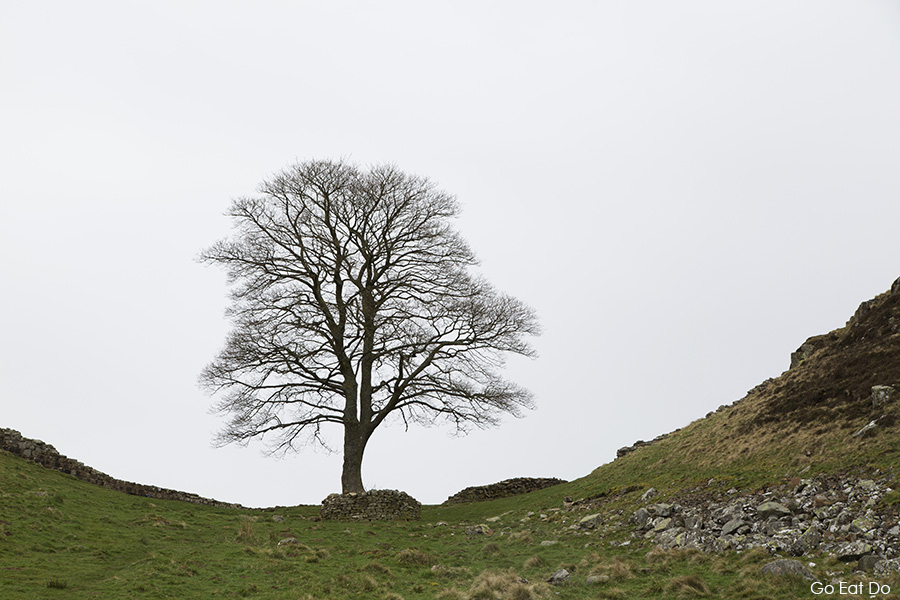
Hadrian’s Wall was constructed by the Roman Army in the second century, marking the northern frontier of their empire. It skirts across England for 117 kilometres, between Solway Firth, on the west coast, and Wallsend, whose name is derived from the presence of Hadrian’s Wall. The remnants of the frontier was inscribed by UNESCO as a World Heritage Site in 1987. Even if you’re not a great lover of history the rugged, scenic landscape of rural Cumbria and Northumberland makes it worthwhile visiting during a trip to the United Kingdom. Don’t forget to take a camera for landscapes showing the wall snaking over the hills in Northumberland National Park.
Over the centuries people have plundered the wall for its stone. Farmhouses, castles and several buildings in towns such as Hexham and Corbridge were rebuilt with repurposed material taken from Hadrian’s Wall, which once stood 4.60 metres tall in places. In some remote sectors, sections of the Roman wall still stand well over two metres high.
The remnants of forts, milecastles and turrets can be seen along the wall. The forts at Housesteads and Vindolanda count among the most visited. For anyone looking to learn about the history of Hadrian’s Wall it’s also worth visiting the Great North Museum: Hancock in Newcastle upon Tyne and heading to South Shields to see the reconstructed gate at Arbeia Roman Fort, which was a granary that supplied the troops stationed along the frontier.
The summer (June to September) tends to be the best time to visit but Britain’s weather is changeable and even wintertime visits to Hadrian’s Wall can prove worthwhile.
Skellig Michael, Ireland
by Elaine and Dave from The Whole World is a Playground; instagram
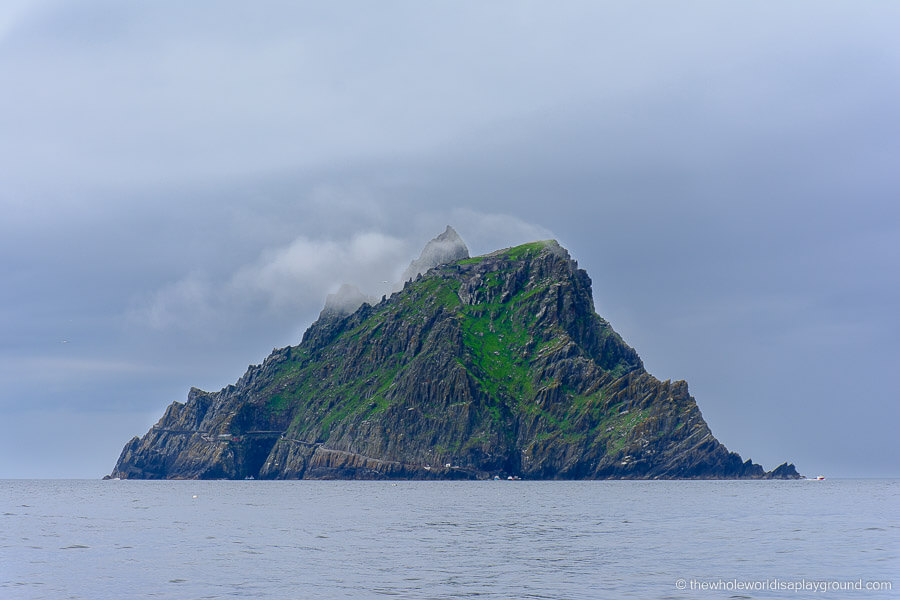
Skellig Michael, or Sceilg Mhichíl as it’s known in Irish, is a spectacularly situated early Medieval monastic island located off the coast of County Kerry in Ireland. A well preserved 6th Century monastic settlement sits atop the rocky island and, as a result, Skellig Michael was designated a UNESCO World Heritage Site. More recently, the island featured prominently in The Last Jedi and The Force Awakens, the latest installments of the Star Wars movies, and has seen a surge in demand for tickets!
Skellig Michael is one of two islands which make up The Skelligs alongside the smaller Little Skellig which is home to over 25,000 seabirds. The islands are uninhabited, only accessible by boat and a maximum of 180 people are permitted to visit Skellig Michael on any given day. The rocky island is stunning and, after a steep 618 step climb to the top, the 6th Century monastery captivates all who gaze upon it. It’s incredible to imagine the simple life the monks must have led on the island. If luck is on your side you might also spot the adorable puffins who breed on the island between March and August.
Weather permitting, Skellig Michael is open from May to September and is accessible by boat from the towns of Valentia, Portmagee, Ballinskelligs and Catherdaniel. Read these tips on how to visit Skellig Michael to make the most of your trip. Demand for boat tickets is very high so make sure to book well in advance to secure a spot. The boat ride can be very rough and windy so those who suffer from seasickness should beware. The waves tend to soak everyone on board the open top boats but the fishing jackets do a great job of protecting passengers from the elements. Make sure to go to the bathroom before setting sail or leaving the boat as there are no bathroom facilities on the island!
Istanbul Historic Areas – UNESCO World Heritage Site, Turkey
by Verislav from Global Castaway; Facebook
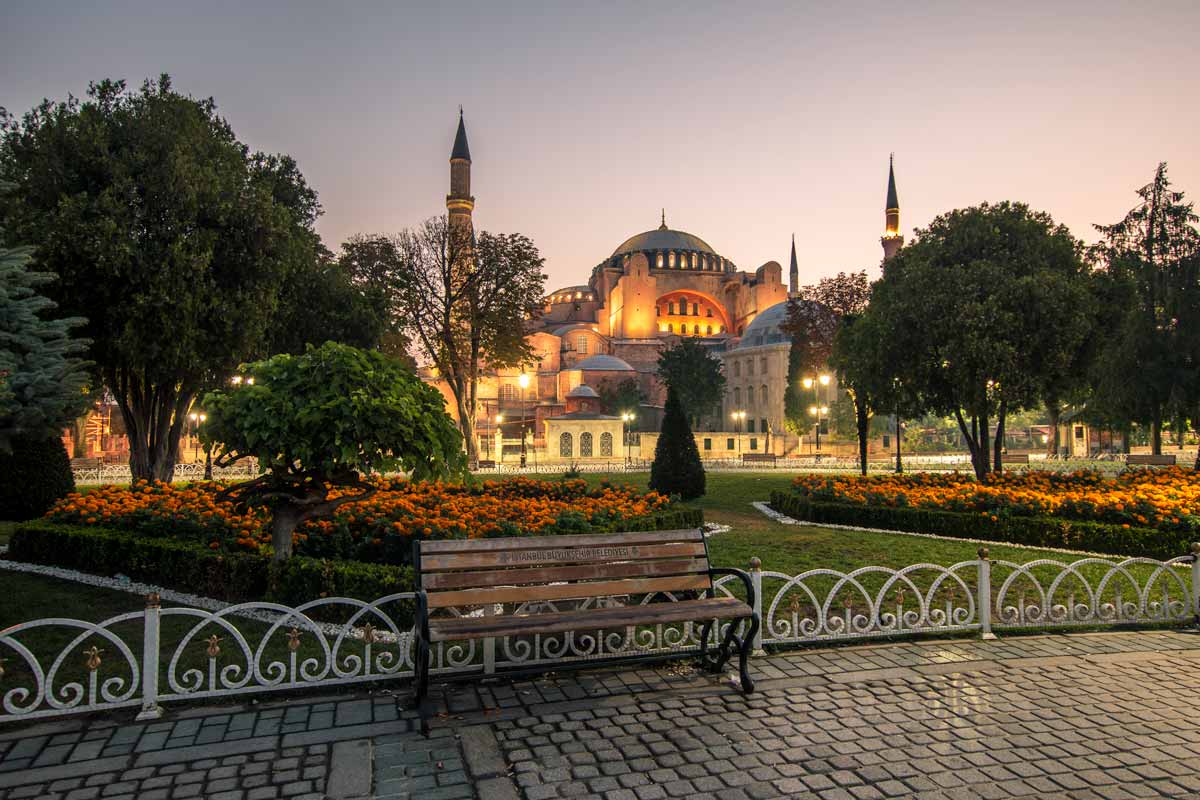
The megapolis of Istanbul is one of the most emblematic cities in the world. Been part of three great empires – The Roman, Byzantian, and The Ottoman, it’s not surprising the city served as an inspiration to authors like Agatha Christie and Dan Brown.
Multiple enigmatic monuments are stuffed in the UNESCO recognized historic areas, so if you want to check them all prepare yourself at least a few days. You won’t be disappointed though.
The biggest highlights and definite must-sees for every traveler are the Sultan Ahmed Mosque, Hagia Sophia, and the Topkapi Sarayi.
Sultan Ahmed Mosque (also known as the Blue Mosque) is one of the most famous and beautiful buildings in the world. Being constructed between 1609 and 1616, it continues to be working mosque to this day. While the most mosques have one, two or four minarets, the Blue Mosque has six of them. The reason why? Nobody knows, but It’s rumored that this was a misunderstanding as the Sultan had instructed his architect to make gold (altin) minarets which his architect understood as six (alti) minarets.
Right across the Sultan Ahmed Mosque is the legendary Hagia Sophia. A former Eastern Orthodox cathedral and the seat of the Patriarch of Constantinople it was later transformed into an Ottoman Imperial mosque and nowadays serves as a museum. Few buildings on the planet have seen as much as Hagia Sophia and just walking around the place can give you goosebumps. When you’re going in, examine the main entrance door. The legend has it it is made out of the wood from Noah’s Ark.
Last but not least are the Topkapi Sarayi. Built in the 15th century, the palace ( sarayi means palace in Turkish) served as a residence, and administrative headquarter of the Ottoman Sultans for 400 years. The most prominent attractions of the Sarayi are the Ottoman imperial harem, the Spoonmaker’s Diamond and the Topkapi Dagger.
Spring and Autumn are the best times to visit Istanbul if you want to enjoy warm temperatures and manageable crowds.

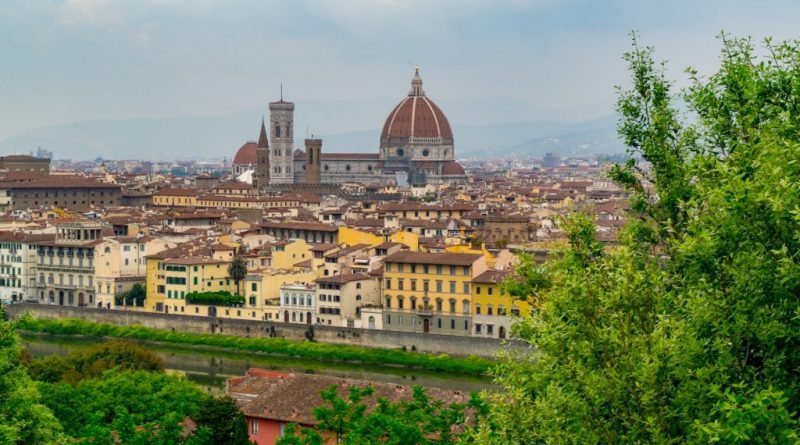
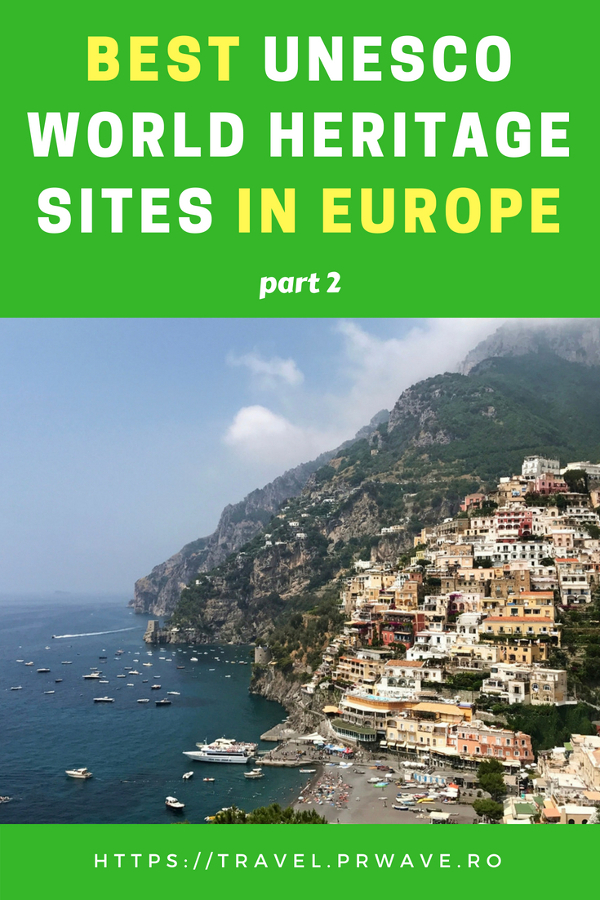
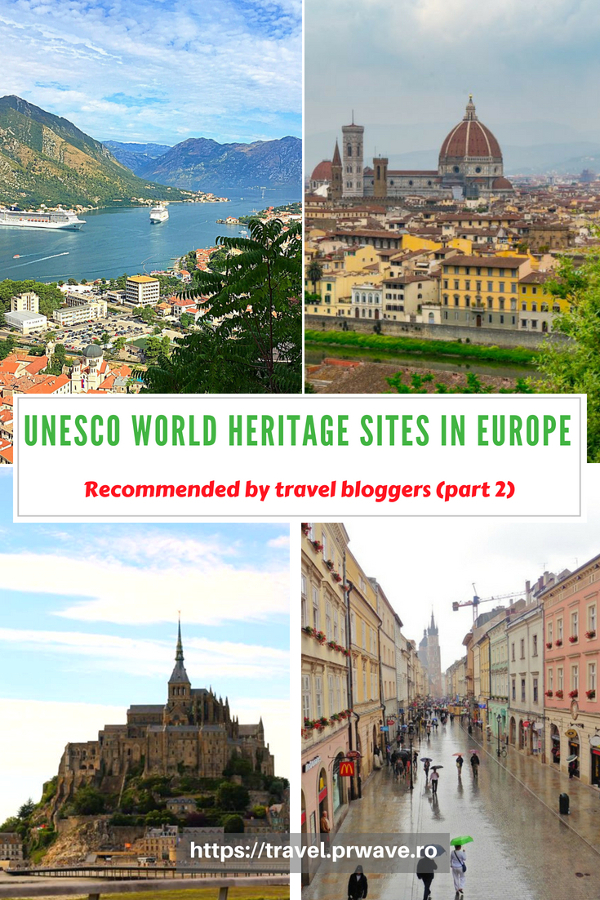

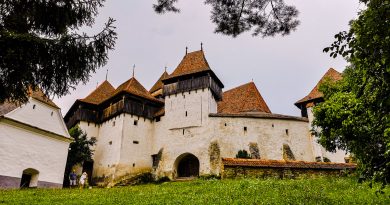
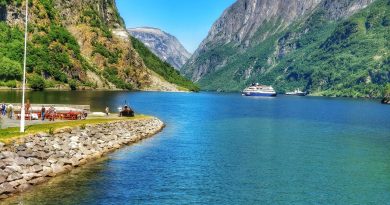
Great to see Hadrian’s Wall included in this list. It’s a stunning place for a walk.